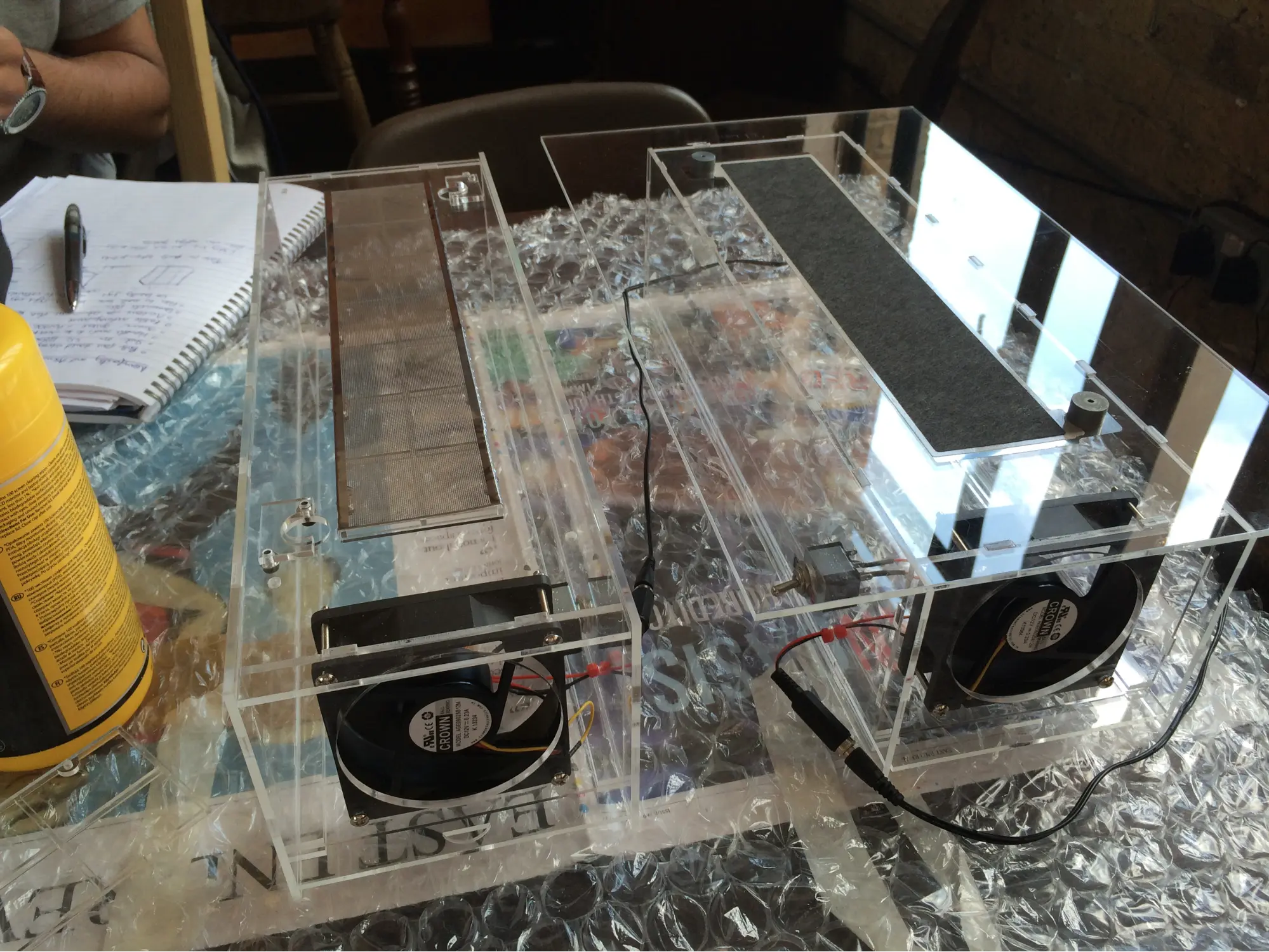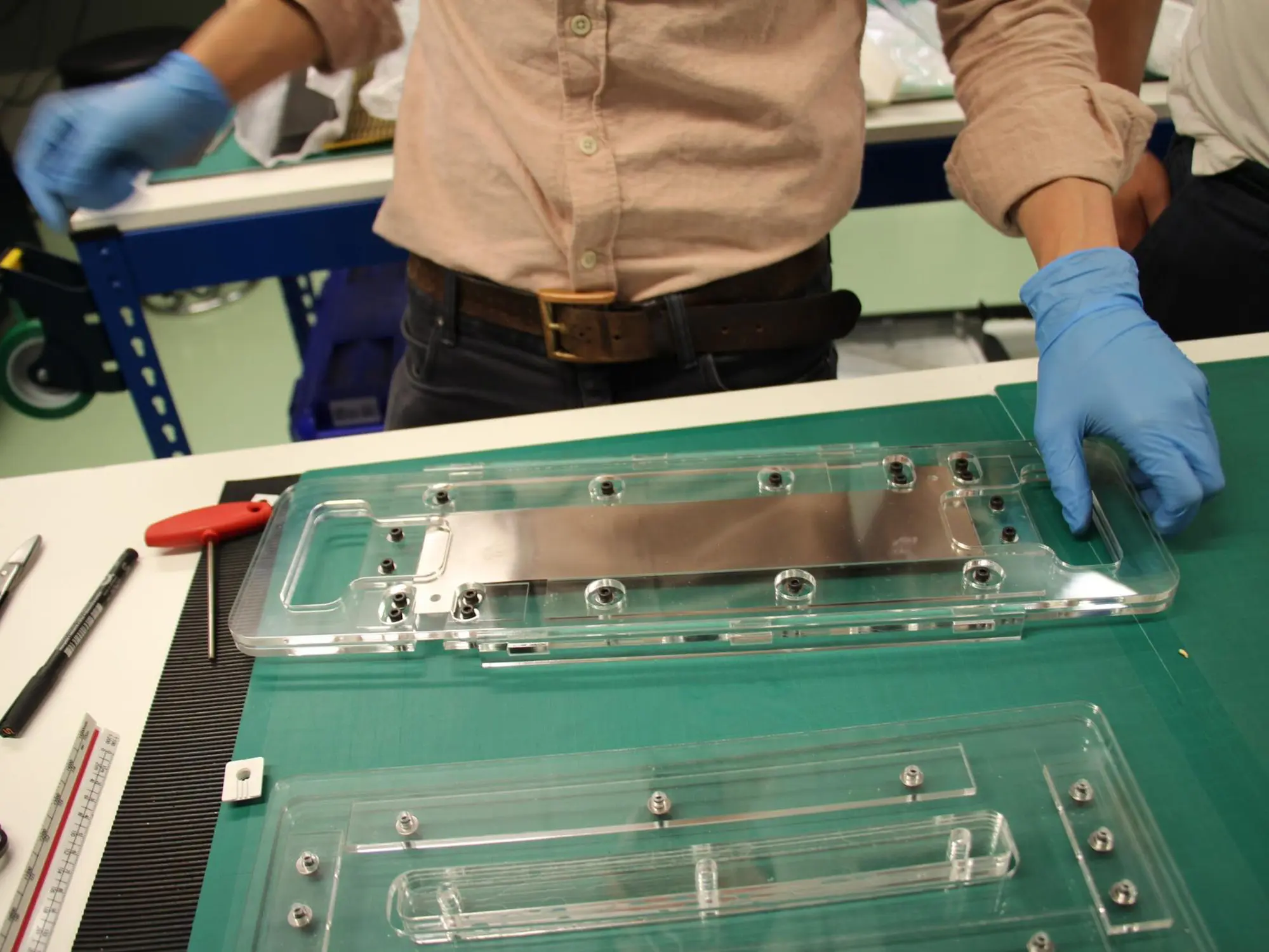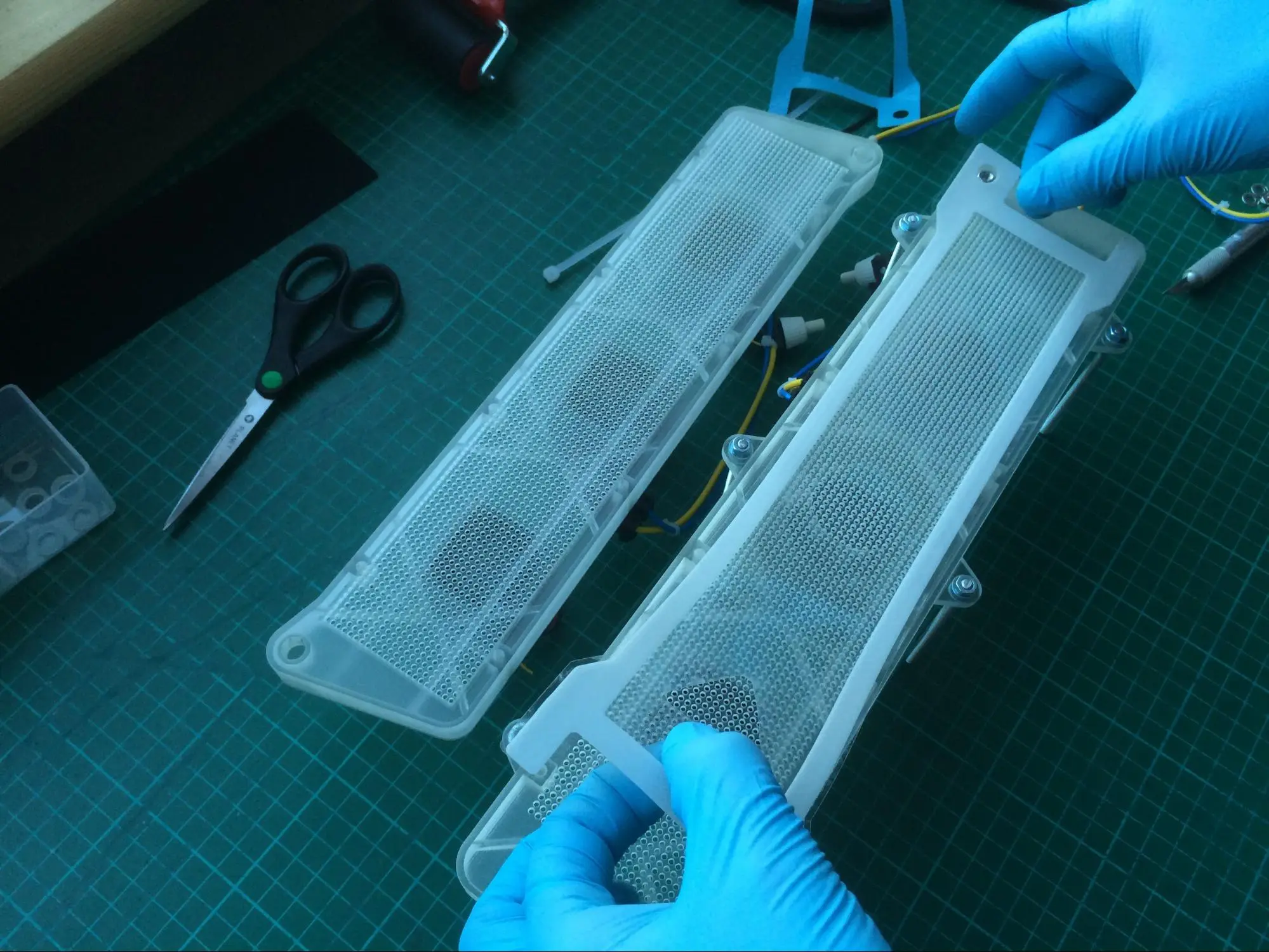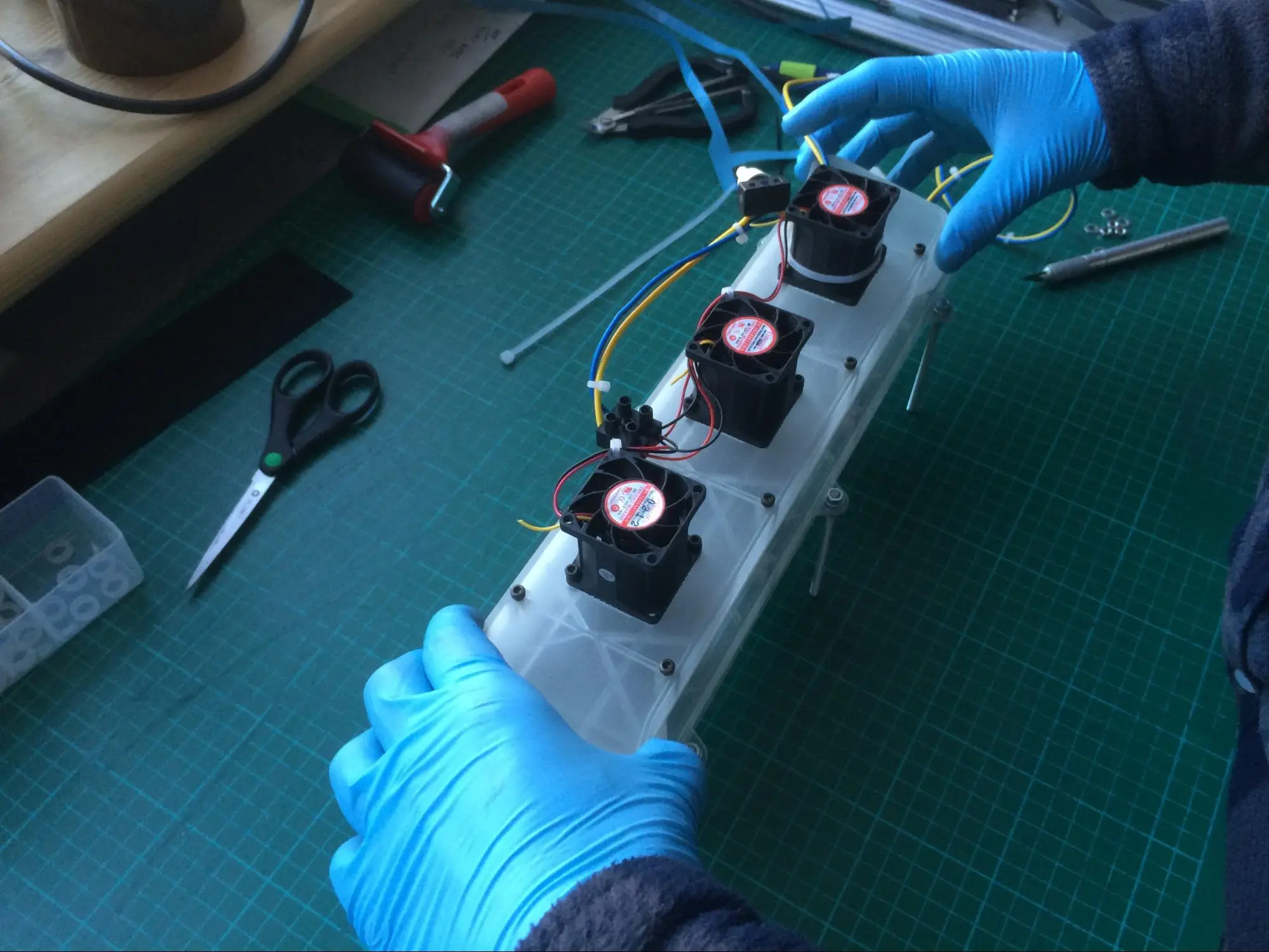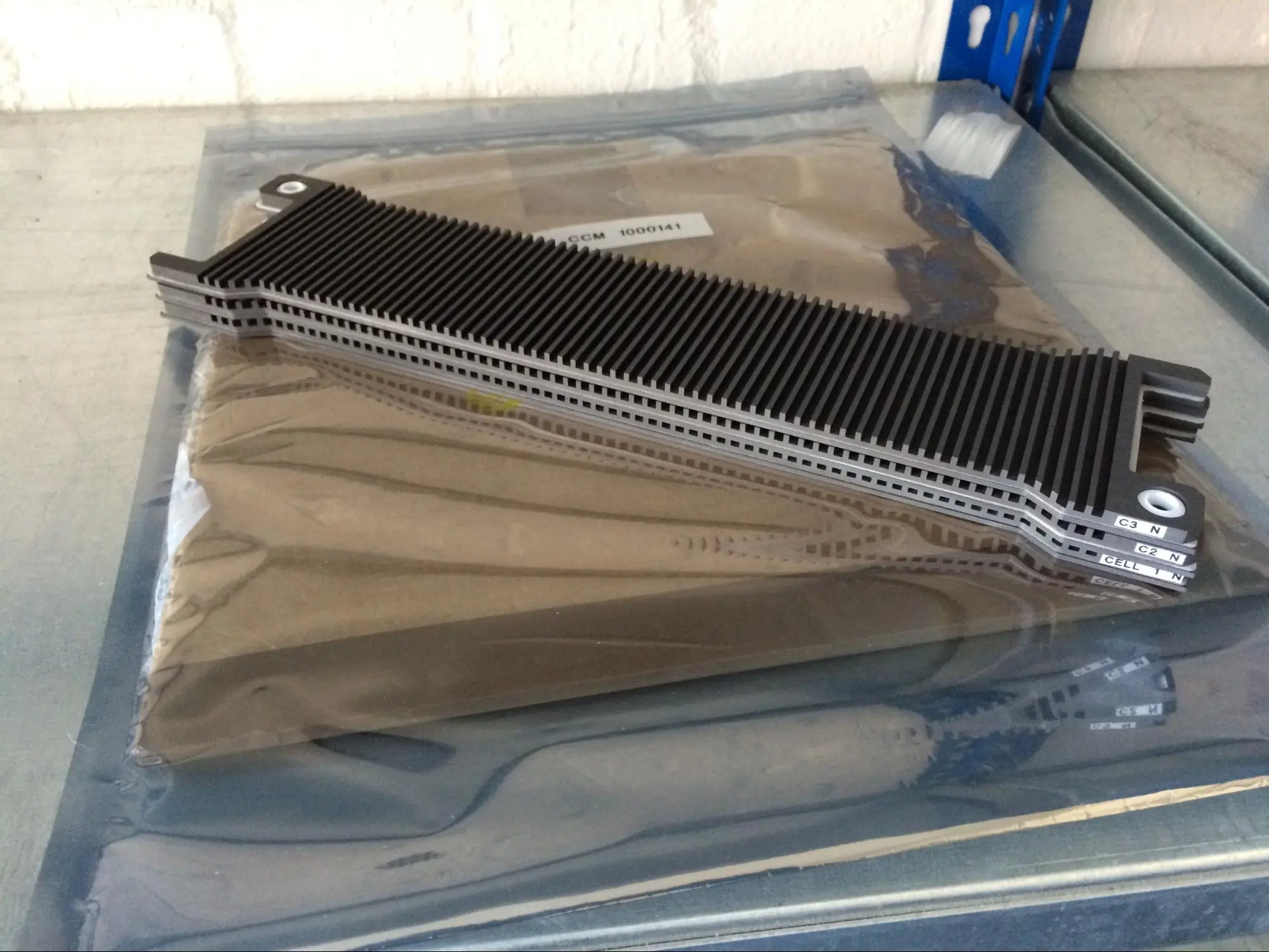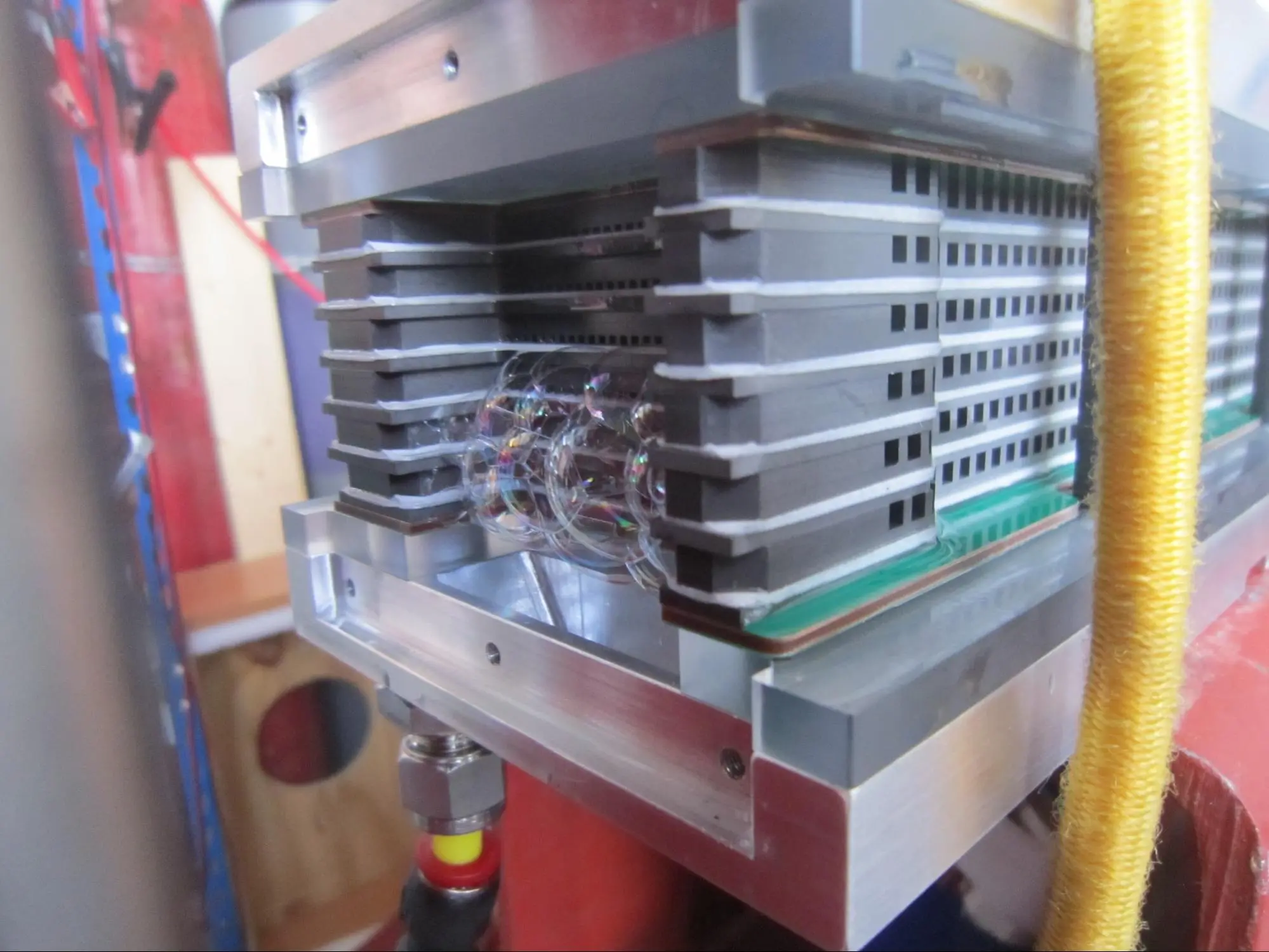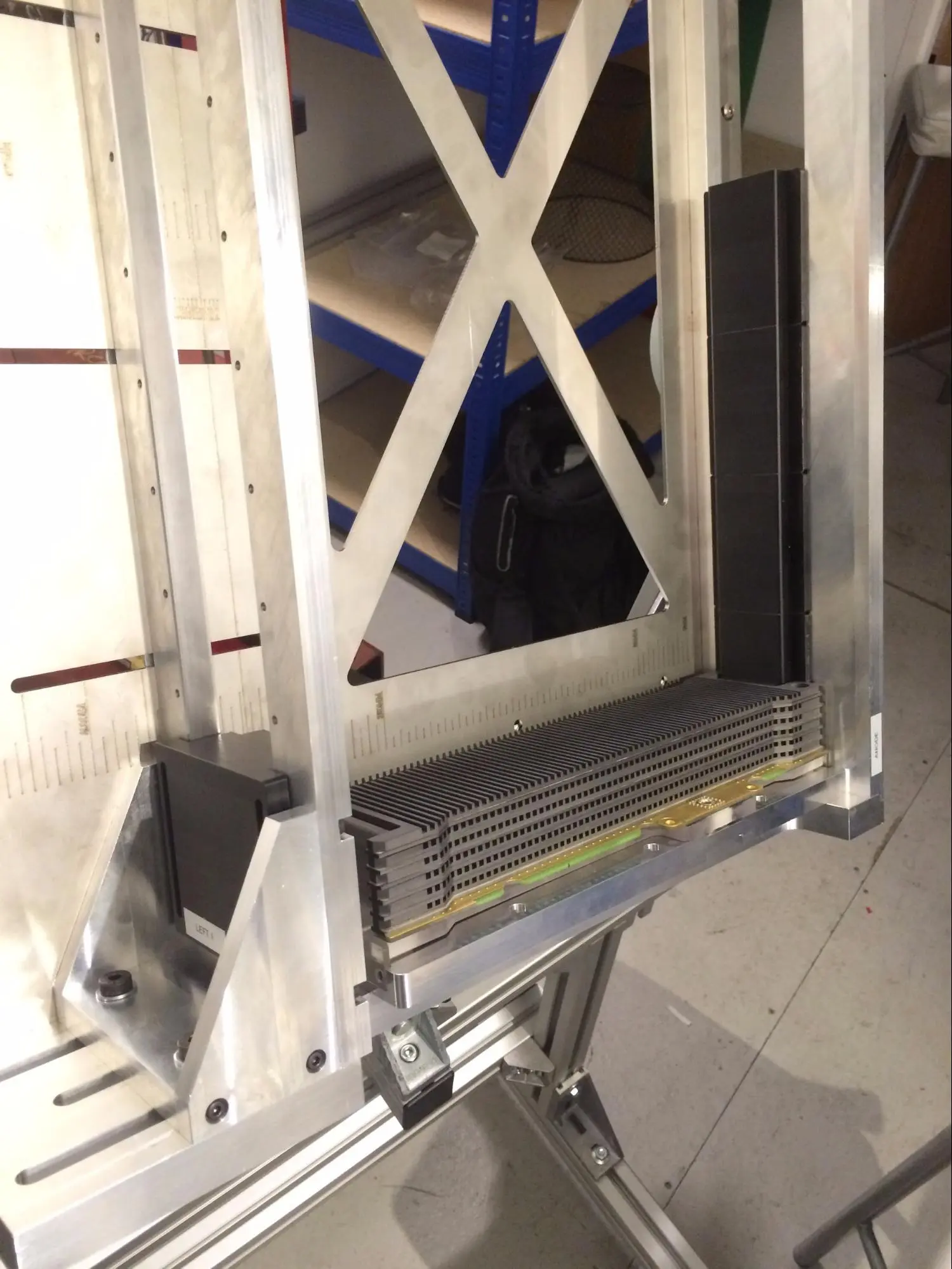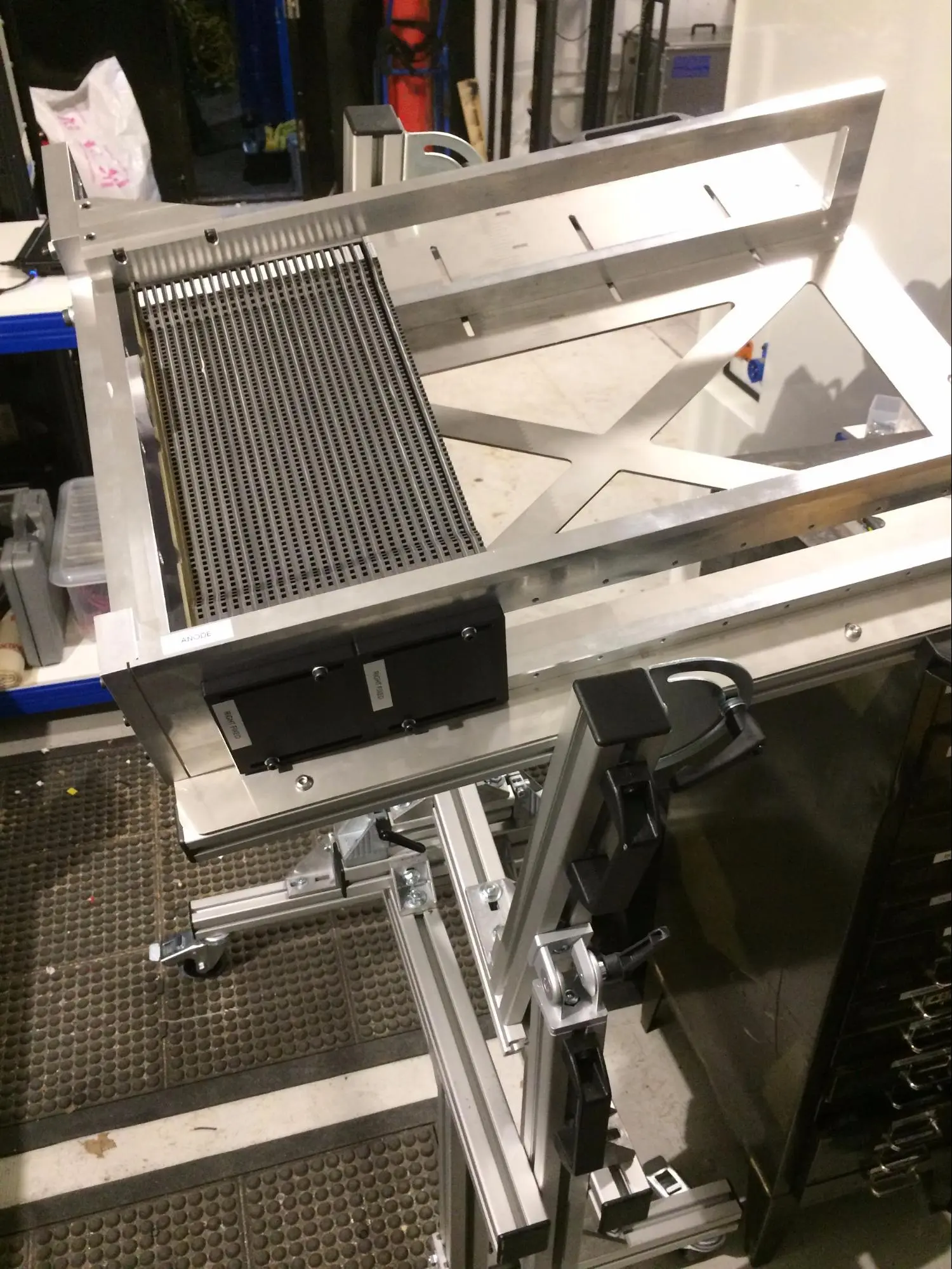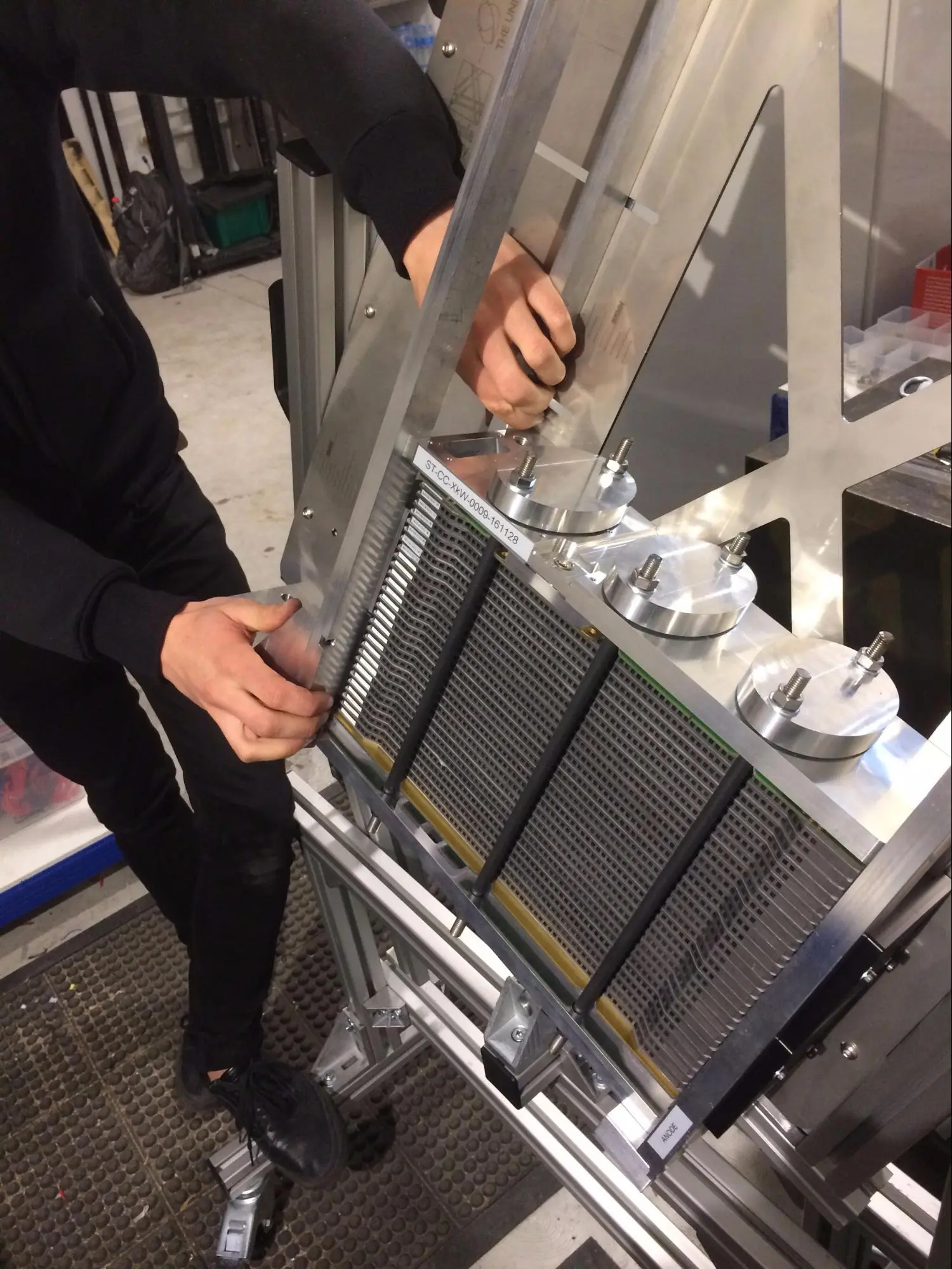Fuel Cell Design
We helped Arcola Energy develop an innovative new hydrogen fuel cell, aiming to accelerate the practical deployment of clean technologies. This grew into a partnership that has delivered portable charging products, vehicle integration and large scale generators.

Fuel cell stacks are like a large battery that is constantly fed with hydrogen and air, creating electricity with water as the only emission. They have no moving parts and can operate to a high level of efficiency. This may sound simple, but to make them work you have to strike a difficult balance between sealing hydrogen, blowing air, removing water and conducting large electrical currents safely.
We provided design and engineering support to help Arcola develop an innovative new fuel cell stack, balancing considerations from electrochemistry, adhesive technologies, hand assembly, automated assembly and design for manufacture.
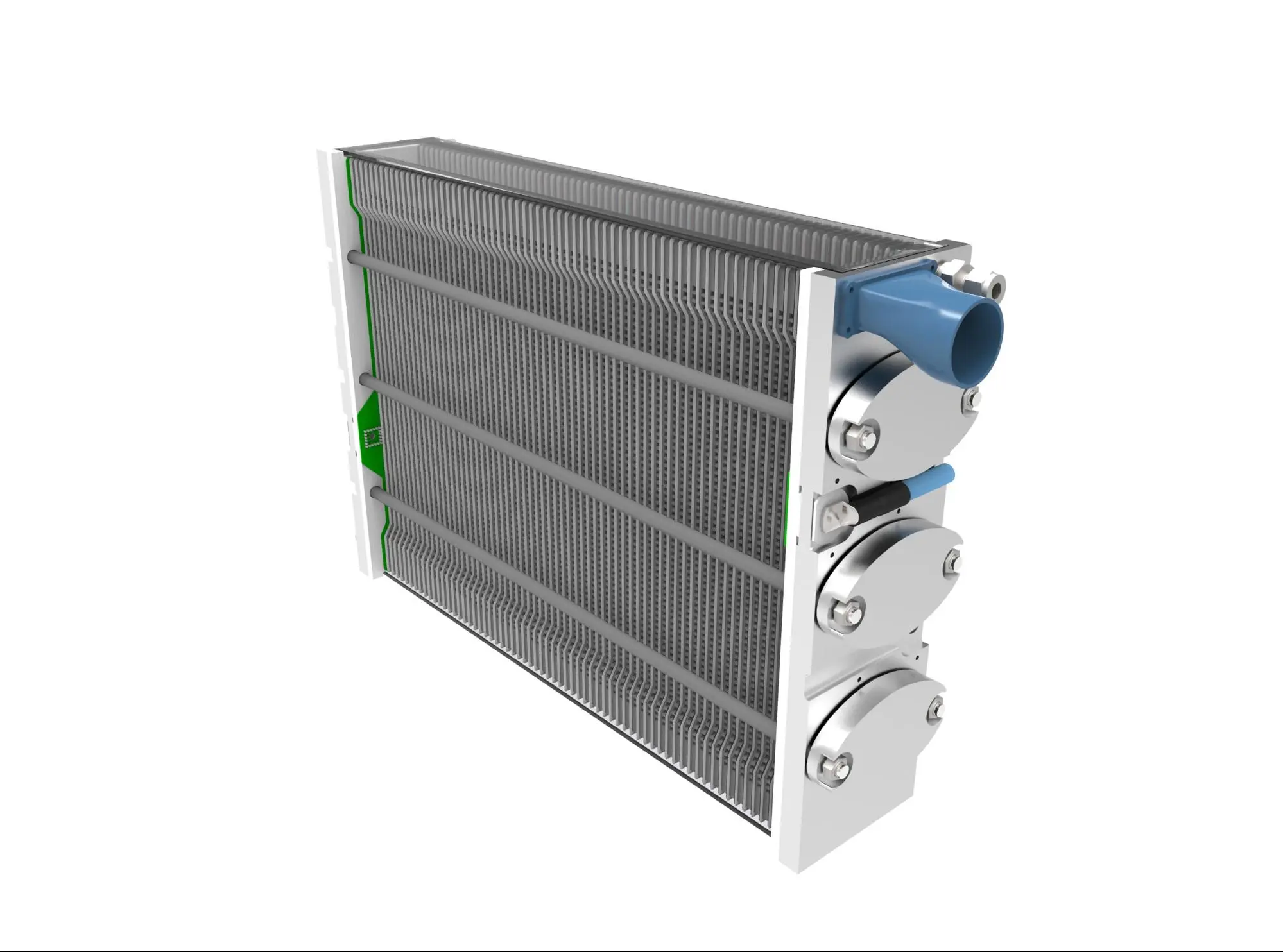
The new fuel cell design includes proprietary features, enhancing performance while protecting the design from being copied by others. The innovative use of adhesives meant that the part count compared to similar designs could be dramatically reduced, lowering the overall cost and assembly time. Adhesives also allow for automated cell and stack assembly, reducing manual labour cost and making UK manufacture possible.
Early stacks were completely handmade. This was particularly challenging, as some fuel cell parts are thinner than a human hair and contain a fragile platinum layer that can easily be damaged. We designed a range of jigs for picking up and aligning components with as little manual handling as possible. Later in the project, our manual approaches were developed into automated assembly processes.
To build a functioning fuel cell, we found a range of local manufacturers who could work with the required materials. We then created designs tailored to their capabilities to deliver the parts within the project timelines. Engineering tolerances were defined to strike a balance between precision and cost. This was a difficult task as hydrogen is the second smallest element, meaning it can escape through the tiniest gap and even diffuses through solid materials.
Once the sub-cell and stack had been prototyped fully, we designed a ‘factory ready’ stacking jig for rapid assembly of cells into a stack. The jig can be moved around easily and tilted to different angles while aligning up to 100 different parts with sub-millimetre accuracy. Fuel cells have many repeating parts, so avoiding a cumulative error in assembly is crucial.
This project required in-depth collaboration amongst a complex project team. We ran design workshops that included adhesive manufacturers, vehicle designers, electro-chemists, manufacturing specialists and scientists. Our ability to understand many different disciplines at a high level allowed us to act as a hub for these team members, and translate complex ideas into a manufacturable product.
We’ve always believed good engineering design has its roots in creativity and the willingness to search out solutions - even if they are difficult to see or imagine. This project put that theory to the test in delivering a careful balance of detailed engineering and hands-on practicality. It has lead to a long collaboration with Arcola Energy, working on a range of projects from portable chargers to vehicle integration, large-scale generators and experimental energy delivery methods.
